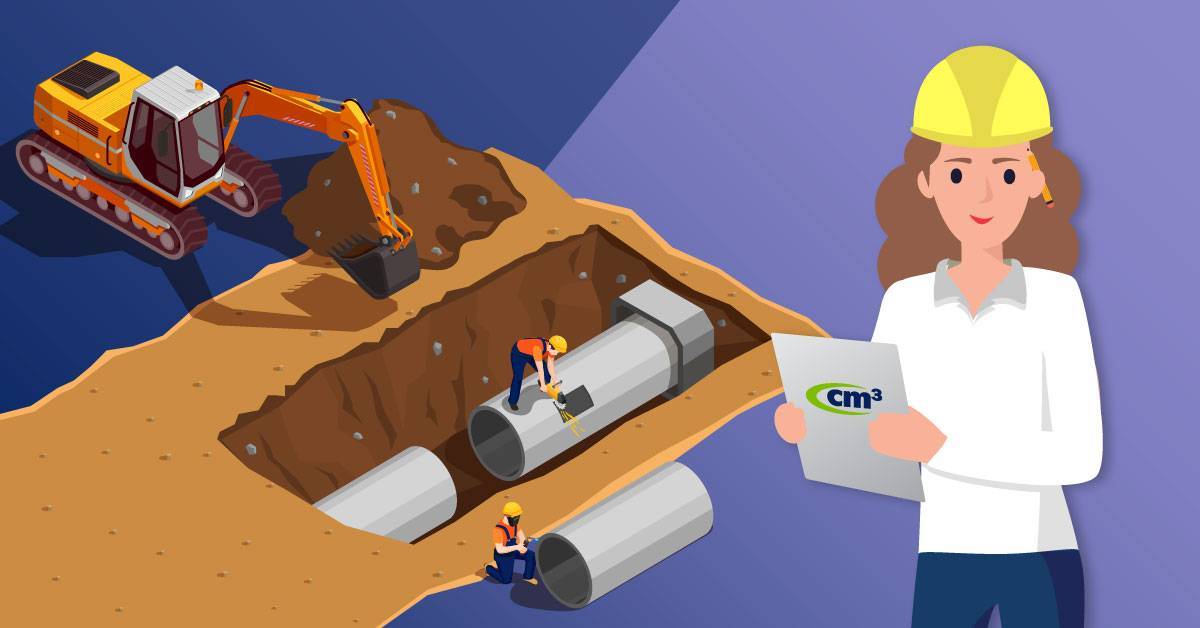Do you, or your contractors undertake excavation works on your site?
Excavation work includes the removal of soil or rock from a site to form an open face, hole, or cavity. This includes trenches, shafts, and tunnels.
It is important that an employer or PCBU understands the various risks that workers undertaking Excavation Work are exposed to, as well has how to recognise that sufficient controls are in place to prevent incidents and injuries.
What risks are involved in excavation works?
Ground collapse
A primary risk when undertaking excavation works is the ground collapsing into and around the excavation site. When conducting a risk assessment, it is important to ask:
- Are there controls to check what type of ground support is in place?
- Has the zone of influence been determined?
- Where is excavated material being stored?
- What plant/equipment is being used and where is it positioned?
- What is the condition of the ground?
Falls from height
Every year in Australia, an average of 29 people die from falls from height. This can be particularly treacherous on construction sites, given the depth of some trenches and excavations. A fall from height can occur from any level to another below it, even within a trench or excavated area itself.
Falling objects
In 2018, 10% of all Australian workplace fatalities happened after being struck by falling objects. Great care must be taken not to dislodge surrounding soil and rocks, or to drop tools, equipment and other objects into the excavation sites. All of these have the potential to strike workers.
Hazardous manual tasks
Manual tasks are particularly common in smaller excavations less than 1.5 metres. These can involve repetitive or sustained force, high or sudden movement, sustained or awkward posture, and vibration from the use of equipment such as jackhammers.
Atmospheric contamination
Atmospheric contamination can occur through a build-up of gases and fumes. It is pertinent to watch out for combustion engines in confined excavations as the build-up of carbon monoxide is dangerous. Control measures to mitigate these risks include:
- Air monitoring
- Personal gas monitors
- Mechanical ventilation
Disturbing underground services & utilities
During excavation, accidental impact with underground and aboveground utilities such as water, gas and electricity infrastructure can be deadly, not to mention costly to repair. It is critical that workers check for the presence and precise locations of these services and utilities before they commence any works.
Water inrush
When groundwater is not managed effectively or left in place, it can undermine the integrity of:
- The excavation site
- The shoring solution used
- Surrounding structures.
Water also creates an increased risk of engulfment within confined spaces. Pumps or other dewatering systems to remove water and prevent build-up can be used to mitigate this risk.
Prequalifying Contractors for Excavation Works
Cm3 recently released a new contractor Risk Review assessment on excavation work. By completing this and including the activity in their prequalification, contractors are able to demonstrate that they are able to undertake excavation works safely whilst on a client’s site. Principal Contractors conducting this activity also need to abide by additional legislative requirements.
For assistance in prequalifying your contractors for excavation work on your site, contact Cm3 today.
